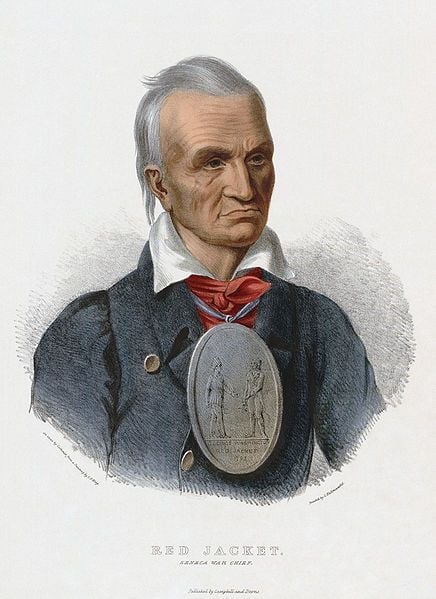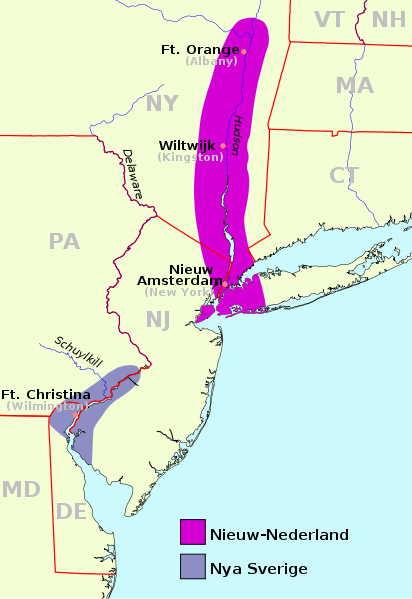Reclaiming Mohawk Land
The history of Indian nations within the United States has been one of loss of Indian land and sovereignty. There have been some attempts to reclaim those things.
In 1974, New York traditional Mohawk from the Caughnawaga Reserve in Canada and the St. Regis (Akwesasne) Reservation in New York occupied an abandoned 612-acre girls’ camp at Moss Lake, New York. The traditionals declared that they were re-establishing the Independent North American Indian State of Ganienkeh on their homeland. The Ganienkeh Manifesto called the occupation a means to
“regain lost pride, lost belief in humanity, and to offset escapes from reality like alcohol, drugs and suicides that are destroying the Indian people.”
The land occupied by the Mohawk had been purchased by the State of New York from the Nature Conservancy and was under the jurisdiction of the New York State Department of Environmental Conservation (DEC) because the land was within the Adirondack State Park. In response to the occupation the DEC filed suit in U.S. District Court seeking to validate the treaty under which the state claimed the land. The action was later dismissed for lack of jurisdiction.


Photos from the Moss Lake occupation are shown above.
Non-Indian support for the Mohawk occupation of Ganienkeh resulted in the formation of a group called RAIN (Rights for American Indians Now) which formed chapters throughout New York State.
As the occupation continued, there were a number of instances of gunfire being exchanged between the Mohawk and non-Indians. The state police gathered evidence of three shootings by non-Indians and offered to prosecute, but the Mohawk refused to testify. In two other instances, a young man and a nine-year old girl were hit by gunfire from the Mohawk.
The state police attempted to enter Ganienkeh to investigate the shootings but were denied access. The police told the Mohawk that they had two hours to remove the women and children before the police were going to enter. A women’s meeting was held and the women said:
“We won’t send our children back to die of alcoholism and drugs on the reservation.”
The police did not attempt to enter.
Citing the Treaty of 1794 the Mohawk insisted that the police complaint must be made to the League of Six Nations (of which the Mohawk are members). Onondaga Chief Oren Lyons, speaking at a press conference, called upon President Gerald Ford to intercede in this dispute and to follow the treaty specifications. The Bureau of Indian Affairs replied to Chief Lyons that his demands based on treaty rights were groundless.
As a result of the shootings, COPCA (Concerned Persons of the Central Andirondacks) was formed in opposition to Ganienkeh.
In 1975, a group of non-Indian landowners in Moss Lake, New York file suit in state court against the state police and the Department of Environmental Conservation for not evicting the Mohawk from the girls’ camp which they were occupying. The judge ruled against the landowners.
After three years, the occupation ended. In 1977, an agreement between the State of New York and the Mohawk at Ganienkeh was reached after nearly 200 negotiation sessions. Under the agreement Ganienkeh was given two parcels of state land at Miner Lake. The Turtle Island Trust was established to receive the state land and to purchase additional private land for the Mohawk.
Initially 25 families moved to Ganienkeh and established a permanent non-reservation settlement. The founding of Ganienkeh is a rare instance in which indigenous people have reclaimed their land from a colonial power. Today, Ganienkeh functions under the original Kaianerehkowa (the Constitution of the Iroquois Confederacy) without interference from the United States or Canada. They claim that they have a right to exist as a sovereign entity under international law. As a sovereign people they claim that they cannot be taxed by the State of New York or by the United States.
According to the community:
Ganienkeh is a branch of the original sovereign Kanien’kehà:ka Nation located within the sovereign traditional territory of the Kanien’kehà:ka. Ganienkeh is NOT a reservation nor is it “recognized” as a “Tribe or Band” by the US or Canada. Ganienkeh does not accept funding from the United States or Canadian governments in any form and does not wish to be “recognized” as a “Tribe or Band” under any foreign law, to be such would be the highest form of insult imaginable.
At the present time, Ganienkeh’s economy depends on bingo (they have a 1,500-person hall) and the sale of cigarettes. They also operate a nine-hole golf course.


